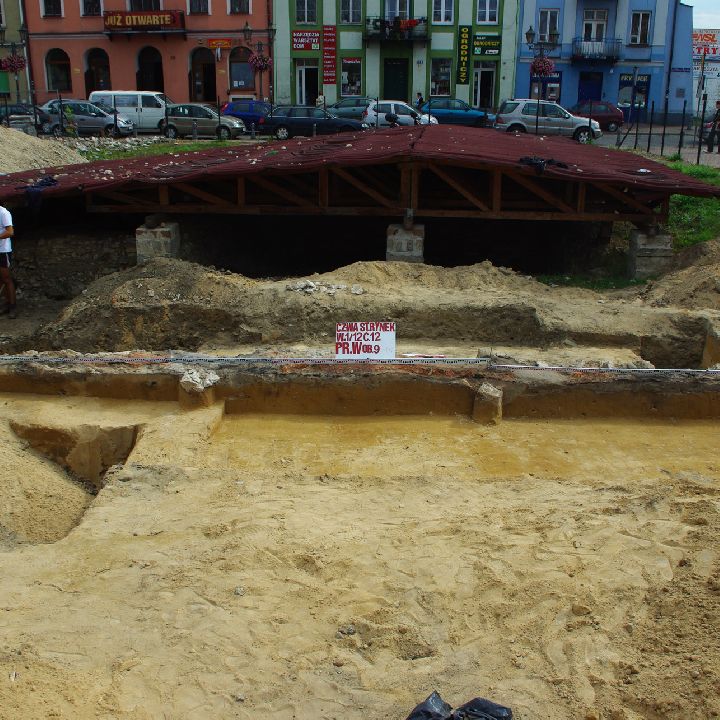Market stalls
In Lesser Poland, in medium-sized and large cities, market stalls were most often grouped together in the market square, whereas in locations where the town hall was erected soon after the town’s establishment, the stalls were located next to the town hall building or in the town hall cellars, some of them reserved for the storage of wine, beer or other goods. The first market stalls were made from wood. Items sold included meat, shoes, bread and other food products, alongside items of everyday use. Stalls belonging to wealthier traders offered cloth and luxury goods. Later, with the increase in wealth, some towns saw the construction of brick buildings. For the most part, they were one-storey buildings with a roof and a cellar (in Wrocław, for example, with a surface area of 30 m2, in Poznań 25 m2), erected in rows.
Few cities had the existence of market facilities documented in any way. Documents drafted on the occasion of granting town privileges or the records of Vogtei overlordship are often a source of information about market infrastructure and the functioning of market stalls. The owner of the town granted the mayor full or partial rights to own and benefit from market facilities. The town privileges granted by King Władysław II Jagiełło in 1423 to the wójt Zygfryd Baruth, the head of the town of Częstochowa, specify that he received 14 market stalls. Town privileges usually listed such facilities in which basic food products or clothing items were to be sold, such as stalls selling meat and bread as well as those offering the services of a shoemaker or tailor. Of course, it sometimes took several dozen years to build these stalls from the moment the town was granted such privileges. As research shows, in small towns it was unnecessary to designate a dedicated market area for permanent market facilities. The goods were displayed in hallways and in windows by placing a board or a drawer outside, or by hanging a board or a box using ropes on the external wall of a house. In many smaller towns, this practice survived until the mid-20th century. On the days of annual fairs, portable benches and tables were brought out to the marketplace. This is mentioned in 15th-century sources on the Kazimierz district in Kraków.
The stalls discovered in the Częstochowa market square were situated in rows, along the western side of the town hall, on the north-south axis. They were arranged horizontally in the shape of rectangular chambers, without a cellar, made of wood on a stone foundation, with common partition walls covered with clay and lime. Two of the four remaining stalls had wooden floors, and the rest had hard earth floors. Each chamber was an individual property. Their size varied; the largest stall was over 4m2. Charred relics of merchants' counters from the west side of the stalls, as well as floorboards and burnt earth floors, have also been preserved. On the basis of the monuments found within the stalls, especially coins lying within wooden floors, it is possible to determine when these stalls were used – from the second half of the 17th century.

